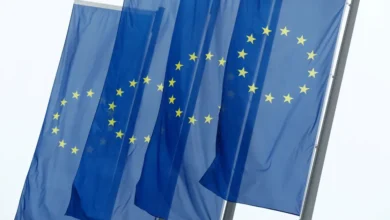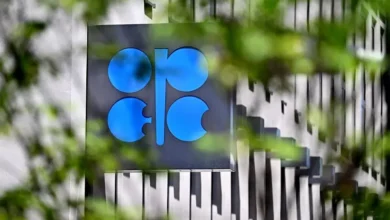Russian ruble strikes weakest mark since April

The Russian ruble struck its weakest mark since late April on Tuesday, hurt by lower foreign currency revenue inflows from hydrocarbon exports and a continued recovery in imports as companies build new supply chains.
By 1005 GMT, the ruble was 0.1 percent weaker against the dollar at 73.93, having hit 73.9850 during the session, its lowest point since April 25.
The Russian currency lost 0.6 percent to trade at 79.52 versus the euro and shed 0.3 percent against the yuan to 10.83.
The ruble’s weakening from around the 68 mark to the dollar in mid-January to current levels can be explained mainly by foreign exchange market dynamics and imports, Alfa Capital analysts said.
Some Russian exporters have been exempt from having to sell foreign exchange revenues for rubles under inter-government agreements since February 6, in a slight easing of the capital controls that supported the ruble throughout 2022.
“According to many indirect signs, one can see the recovery of imports due to new supply chains through friendly countries, therefore, demand for foreign currency from importers has increased,” the Alfa Capital analysts said.
The Russian government has been selling 8.9 billion rubles ($120.8 million) of foreign currency per day to plug a budget deficit that has soared because of lower oil and gas revenues.
Expectations for weaker energy revenue were also weighing on the Russian currency after the central bank cut its Urals oil price forecast on Friday. The bank dropped its projected average price for the rest of the year to $55 a barrel, down from its previous forecast of $70.
Brent crude oil, a global benchmark for Russia’s main export, was down 1 percent at $85.9 a barrel.
The Russian market is also adapting to a new system for tax payments, where exporters usually convert foreign exchange revenue to pay local liabilities, which supports the ruble.
Payments were previously spread out over the last two weeks of each month, boosting the ruble for several sessions, but are now due in a single payment, which this month falls on February 28.
“The peak of the February tax period will not come until February 28, and for now risks of the USD/RUB rate rising above 74 remain,” said Bank St Petersburg analysts in a report.
Russian stock indexes were lower.
The dollar-denominated RTS index was down 1.4 percent to 952.6 points, its weakest mark since January 6. The ruble-based MOEX Russian index was 1.3 percent lower at 2,235.3 points.










